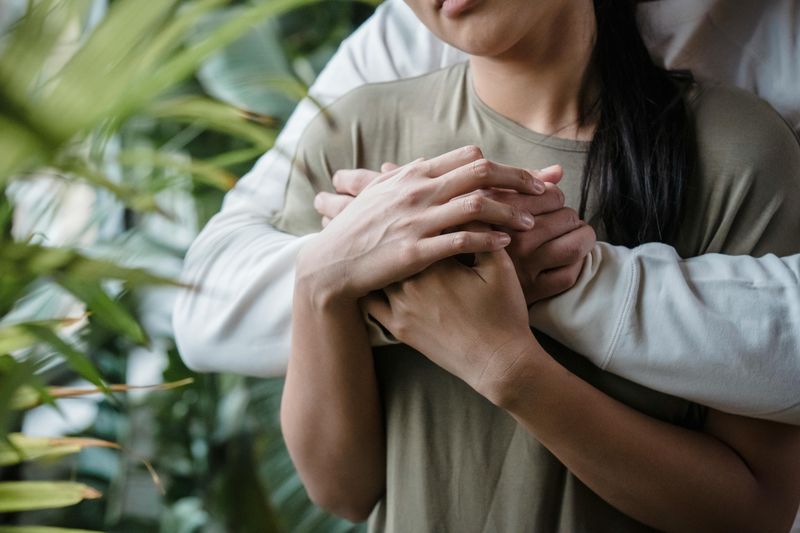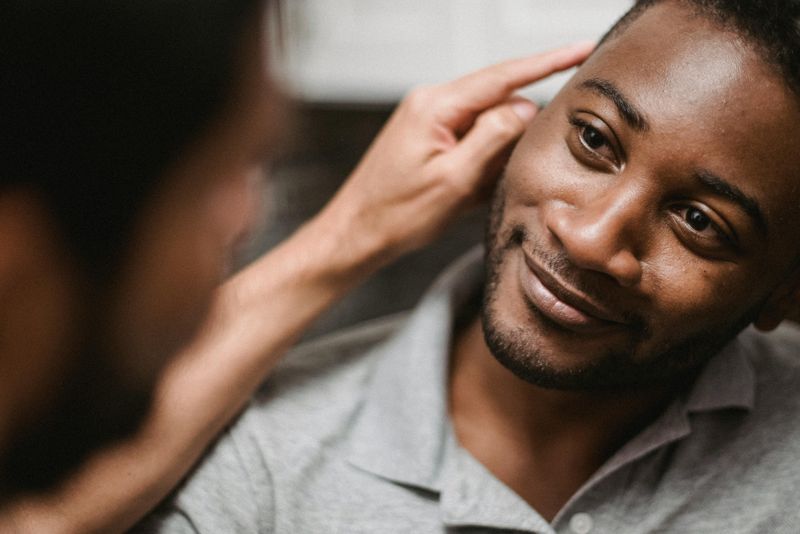12 Non-Verbal Gestures That Strengthen Emotional Bonds

Communication goes far beyond words. The silent language of gestures often speaks louder than any phrase we could utter. When we connect with loved ones, friends, or partners, our bodies naturally express feelings that words sometimes can’t capture. These nonverbal cues build trust, show affection, and deepen our relationships in profound ways.
1. Sustained Eye Contact

Looking directly into someone’s eyes creates an invisible bridge between souls. When you maintain gentle eye contact during conversation, you’re silently saying, “I see you, I value what you’re sharing, and you have my complete attention.”
Many people struggle with this intimate gesture in our distraction-filled world. The power lies in its vulnerability—allowing someone to witness your expressions while you witness theirs creates mutual trust.
Try holding eye contact for just a few seconds longer than feels natural. This small change can transform ordinary interactions into meaningful connections, especially during important conversations or when expressing feelings that matter.
2. Gentle Touch

Sometimes, a simple touch says more than words ever could. A hand resting gently on a shoulder or a quick pat on the back can offer comfort, grounding emotions in a shared physical moment.
Our skin contains thousands of receptors designed specifically to register gentle contact. When activated, these receptors trigger the release of oxytocin, often called the “bonding hormone,” which reduces stress and builds trust.
The beauty of gentle touch lies in its subtlety. Small gestures like brushing fingertips while walking or a quick squeeze of reassurance during tense moments can create lasting impressions far beyond their momentary nature.
3. Warm Smiles

An authentic smile—marked by the telltale crinkle around the eyes—can instantly shift the mood of a moment. It communicates trust, openness, and a true sense of welcome.
Scientists distinguish between polite smiles and genuine ones. The real ones, called Duchenne smiles, involve both the mouth muscles and the orbicularis oculi muscles around the eyes.
Our brains can instantly recognize this difference, which is why authentic smiles feel so powerful. Sharing a smile across a crowded room or offering one during a difficult moment creates an immediate emotional bridge. It’s like a visual hug that says “I’m happy you’re here” without saying a word.
4. Active Listening Posture

Your body speaks volumes while your mouth stays quiet. Leaning slightly forward, nodding occasionally, and keeping an open posture tells someone their words truly matter to you.
This physical engagement often matters more than any verbal response. Active listeners naturally mirror micro-expressions and tiny movements. These subtle reflections show empathy and create synchrony between people.
When someone sees you physically responding to their words, they feel understood on a primal level. Face the speaker directly, uncross your arms, and remove distractions like phones. These small adjustments transform ordinary conversations into meaningful exchanges where emotional bonds naturally deepen through the silent language of attentiveness.
5. Mirroring Movements

Have you noticed how people who feel connected naturally adopt similar postures? This unconscious synchronization happens when we’re emotionally attuned to others.
The slight tilt of a head, matching energy levels, or adopting similar gestures creates powerful nonverbal harmony. Mirroring evolved as a social bonding mechanism. When someone subtly matches our movements, our brains register comfort and similarity, making us feel understood without a single word exchanged.
The key is authenticity—forced mirroring feels manipulative. Natural mirroring flows from genuine connection and interest. When you find yourself unconsciously adopting someone’s gestures or speech patterns, it often signals a developing emotional bond worth nurturing.
6. Soft Facial Expressions

Before a single word is spoken, the muscles around your eyes, mouth, and forehead often speak volumes. A calm face and soft eye contact can make others feel emotionally safe and seen. Even the briefest micro-expressions—those subtle, split-second shifts—can reveal what someone is truly feeling.
When we maintain soft, open expressions, we signal acceptance and emotional availability. Practice awareness of tension in your face, especially during difficult conversations.
Consciously relaxing your brow, jaw, and shoulders invites others to do the same. This mutual softening creates an environment where vulnerability flourishes and deeper emotional connections can take root without either person saying a word about feelings.
7. Playful Gestures

A gentle elbow nudge. A silly face across the dinner table. The playful wink that says “we share something special.” These lighthearted movements inject joy into relationships and create private languages between people who care about each other.
Playfulness releases tension and reminds us not to take life too seriously. The unexpected nature of these gestures—a spontaneous dance move or a funny grimace—breaks through routine and creates memorable moments of connection.
Children naturally understand the power of physical play. As adults, we often forget this language of joy. Bringing back playful physical interaction—whether it’s a mock sword fight with kitchen utensils or making snow angels together—rekindles childlike bonds that strengthen adult relationships.
8. Hugs and Embraces

Wrapping your arms around someone creates more than warmth—it builds a sanctuary. A 20-second hug triggers oxytocin, eases stress by reducing cortisol, and fosters trust by altering the brain’s chemistry. Every kind of hug carries its own emotional purpose.
The bear hug offers protection and overwhelming support. The side hug communicates casual affection. The long, still embrace provides space for emotions to settle during difficult moments.
Cultural differences influence how we approach hugging, but across humanity, the embrace remains one of our most powerful connective tools. When words fail, a heartfelt hug often succeeds in communicating what matters most—I’m here, you matter, we’re connected.
9. Holding Hands

Palm against palm, fingers intertwined—this simple connection grounds us in moments both ordinary and extraordinary. Hand-holding evolved as one of our earliest comfort gestures, with parent-child hand-holding establishing security that we continue seeking throughout life.
The intimacy of this gesture lies in its sustained nature. Unlike a hug or pat, holding hands creates ongoing connection that can last minutes or hours.
During walks, difficult conversations, or quiet moments, this unbroken physical link serves as a tangible reminder of togetherness. Research shows that holding hands with loved ones actually reduces physical pain and helps regulate emotions. Our hands, with their concentrated nerve endings, create a direct pathway for emotional communication that bypasses words entirely.
10. Gentle Grooming Touches

Brushing lint from a shoulder. Tucking a strand of hair behind an ear. Straightening a collar. These small, caring gestures demonstrate attention to detail and physical comfort with another person. Primates engage in social grooming to build community bonds.
Humans have evolved these behaviors into subtle caretaking touches that show both affection and respect for someone’s appearance. The intimacy lies in the careful attention required—you must notice something others might miss.
These fleeting moments of care create lasting impressions because they combine physical touch with focused attention. The message conveyed is powerful: “I see you completely, I care about your wellbeing, and I’m comfortable enough to enter your personal space with gentle intention.”
11. Comforting Proximity

The art of being close without crowding creates a bubble of shared energy. Sitting with thighs barely touching or standing near enough to feel someone’s warmth without demanding attention demonstrates respect for personal boundaries while offering connection.
Our bodies subconsciously register the presence of others within our personal space. When that presence feels safe and welcome, proximity becomes a comfort rather than an intrusion. This unspoken negotiation of shared space builds trust through physical awareness.
Cultural norms influence comfortable distances, but the emotional principle remains universal—finding that sweet spot where closeness offers security without pressure. Like orbiting planets, the perfect proximity creates gravitational pull without collision, allowing both independence and connection to coexist beautifully.
12. Silent Supportive Presence

Sometimes the most powerful thing we can offer is simply being there. Sitting beside someone during grief, waiting in a hospital room, or standing nearby during a challenge—these silent acts of presence speak volumes about commitment and care.
The quality of attention matters more than any action. Being fully present—phone away, mind focused, body relaxed but attentive—creates space for others to process emotions at their own pace. This gift of unhurried time communicates that their experience matters enough for you to pause your own life.
Many people rush to fill silence with advice or questions. The courage to simply exist alongside someone’s pain or joy without trying to change or direct it demonstrates profound respect for their journey and builds unshakable trust between souls.

Comments
Loading…